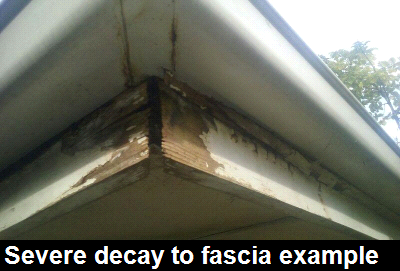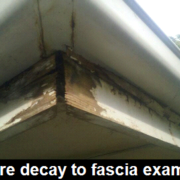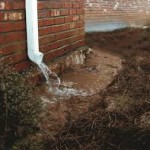Diagnosing dry and wet timber rot
One of the biggest issues to structural timber in Australian houses is fungal decay. Both wet rot and dry rot can cause serious structural damage to your home and can lead to collapse of your floor, balcony or other structural members. It is therefore yet another reason to have a pre-purchase building inspection completed to identify any fungal decay and determine whether a potential purchase could be affected by this potentially devastating problem.
Wet Rot

Check vulnerable areas of timber, such as window and door frames, or joints of beams or timber fascias, where water can collect. If the paint finish is damaged, this can increase the risk of wet rot. However, although the paint may look acceptable, the timber underneath may be rotting from behind. Timber suffering from wet rot will feel spongy and may look darker than the surrounding timber. When dry, the timber will easily crack and crumble into fine particles. Timber in the roof can also be at risk especially where there is roof damage allowing rainwater to run onto the roofing timbers.
Prevention of wet rot in a house is the first step – Ensure that all external timber frames are adequately painted to protect the timber from ingress of water.
Locate any damp walls and address the problem, it could be a missing or damaged damp proof course or a bridged cavity, a leaking roof flashing or a leaking pipe . If necessary seek expert advice as the moisture in one area may be just a sign of a bigger problem.
Make sure that any soil and other debris is cleared away from around the bottom of timber frames.
Check the roof space for the penetration of water, the water could be running down the sisalation layer behind the tiles onto timber some distance away from the hole. When it is raining, go into the roof with a torch (the shining of water on a timber normally stand out very easily).
Other common places for wet rot are under the kitchen sink, bath, shower, basins, toilet and behind the washing machine. Any areas where a small leak from either a supply pipe or drain could go unnoticed for a long time but where timber could become saturated with water.
In order to treat wet rot, first of all the leak needs to be repaired.
If wet rot occurs in structural timbers (such as roof trusses, floor joists), expert advice should be sought as the implication for structural integrity must be established. In other areas, the rotten timbers should be removed and replaced; if the damaged area is fairly small, it can be cut away and a new piece of timber joined to that remaining. If there is any doubt that the structural problem has been eliminated, the new and adjoining timber should be treated with a proprietary wet rot treatment before repainting.
Dry Rot
Dry-rot fungus, although is not as common as wet rot, is a lot more destructive, and thrives in moist unventilated conditions (requiring a moisture content of around 20%). It can cause widespread destruction of structural timbers, skirting boards and door frames, and wood flooring, and often occurs in the areas of a property that are not often seen, such as floor voids, or behind timber panelling, so damage may be extensive before the attack is discovered.
Initially the fungus appears as off-white felt-like or cotton-wool like sheets on brickwork and timber, and, in later stages, can develop fungal strands as thick as your finger. Where the fungus is exposed to light, it often has a lemon-yellowish tinge. Often, large flat mushroom-like fruiting bodies can easily grow through finishes such as plaster or paint. These fruiting bodies are sometimes the first visible sign of a problem, and the structural decay is well progressed. Dry-rot decayed timber can be crumbled between your fingers
Treating dry-rot can involve removal of the affected timber (including all timber for a metre beyond the visible signs of the fungus), however the modern approach is to use environmental controls, such as isolation and ventilation, which ensure that the damp, unventilated conditions required by dry-rot do not occur. The techniques are simple ways to ensure that the timber in a property does not become damp enough for dry-rot to attack, for instance replacing dry-rot decayed joists with new timber using joist hangers, instead of building them back into the brickwork, or by using ventilated skirting board details to encourage ventilation of a floor void.
If you suspect that you may have a problem with wet rot or dry rot in your property contact Melbourne House Check for advice on 1300 729 352. The longer a rot problem is left untreated the more it will cost to treat and the greater safety risk to your family. Melbourne House check has been diagnosing properties for dry rot and wet rot for over 4 years and have in this time built up a wealth of experience. Alternatively, complete our on-line survey request form and we will contact you to arrange an inspection.






It is good to know that I don’t have to worry too much about these timbers rotting. I mean, it isn’t a good thing, but at least I can replace them without worrying about the structural integrity of my roof. The hardest part will probably be finding and fixing the leak that led to the wood getting wet.